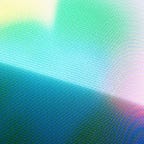Case C
Home things and the gauging of limits
Our Everyday Forms is an archival service based in New York City, comprising 3-hour home tours run my Myriam D. Diatta. It is for individuals, co-habitants and families who want their care tools documented for personal, community and legacy purposes. Within the archival service these care tools are framed as tools for resistance specifically used at home to navigate marginalization and displacement. It is a service by and for Black, Indigenous, People of Color and Queer, Trans, People of Color. The home tours are a practical service, yet there is another project embedded within it. The project explores how I, as the researcher, practitioner, documenter, videographer, guide attend to my own awareness while in participants’ homes to inform the way I do the work with each person.
The focal question is, how might I center my bodily, felt sense when making decisions about what questions to ask, when to take a break, whether to go over time or not — rather than centering the technical procedure, ‘objectives’ or desired outcomes of the home tour. This is a transgressive approach that deliberately un/settles my past overwhelmingly western-dominated design practice and to slowly shift into one that is original and authentic to my own vernacular ways of knowing. To prepare to center my bodily, felt sense, I do an exercise. I write stream-of-consciousness essays of about 25 sentences each that story my bodily sensations of turning, spinning, air-yness, being dragged across, aching, bulging, feeling myself in another room, or parts of my body, scattered.
“… I am nowhere in particular. It’s not empty. I belong there and it’s full. I am sitting in a chair while there is a lot going on. … I am not facing pressed up against myself. There’s a little room. It’s roomy. But I am still aware I am inside myself. It is just me here. But from my memory and my bodily aches and itches I can feel people’s presence. …”
This exercises an acute sense for the way my body is reacting. I then evolve those tangible felt qualities into questions and decisions like, How do I tap in to how it feels to be aware of the space I take up?, How might I gauge my limit(s) and limitations for engaging in a conversation or situation?, or How might I shift the way I hold space for the participant I am working with? — Critical questions for a practitioner who works with people and the vulnerable experiences they share with me.
The materials, the tools, the objects that Our Everyday Forms centers on include: a deck of tarot cards, a Guyanese novel, a journal, droplets of water on the skin from a shower, typewritten creative writing, a red bracelet, prayer beads, essential oils. Here, I present two out of many other manifestations of the materials in the service.
“…Later, it revealed itself that Akeema shifted from the intended framing by taking out objects. Rather than mentally bookmarking which tools to talk about with me, a situation laid in front of us where all of the objects are out, present and alive in the room. The presence of the objects in this situation made it challenging for me to stop when we needed to because we were having to physically neglect objects (therefore, neglecting her experience with them).”
In my design practice and for Our Everyday Forms, embodiment (felt knowing) is the avenue through which I attend to the experiences of others and I use it in this specific way.
Read more from this publication
Case A | A handbag and the making of a boundary
Case B | A deck of cards and a vocabulary for social choices
Case C | A collection of home things and the gauging of limits
Case D | A balcony and a way of caring
Case E | A city playground and the connection of family and everyday life
Case F | A hacienda as an “instrument” to notice and wonder
